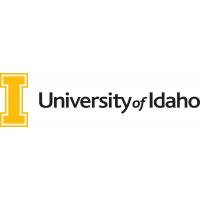The imperative to address issues pertaining to large social-ecological systems (SES) through appropriately scaled, well integrated, transdisciplinary efforts is now widely recognized (NSF 2015). Biological, physical, social, and economic elements of these systems are intricately interrelated (Tilman et al. 2002) and scientific endeavors are expanding beyond traditional disciplinary sciences to encompass multi-disciplinary approaches to build new system-level knowledge. Funding agencies around the world are investing in very large coordinated projects to better understand the complexity and diversity of human-natural systems and the intended and unintended consequences of human actions. Large SES projects typically address wicked problems, i.e. those involving complex systems with incomplete or apparently contradictory knowledge, stakeholders with divergent positions, and large economic or social consequences. These projects often encompass management challenges associated with natural-resource-based provisioning of food, energy, shelter and other ecosystem services. Such problems require research and action that involve teams of physical, natural, and social scientists crossing disciplinary boundaries (interdisciplinary) and deeply engage stakeholders to define problems and find effective solutions, (i.e. transdisciplinary, Wickson et al. 2006). Successful efforts draw on specialized knowledge, interests, and skills of all participants. They are designed to be dynamic and responsive to changing conditions and they must integrate knowledge creation, education, and outreach. The field of “team science” has been formalized and supports coordinated scholarly and applied effort (Science of Team Science or SciTS, http://www.scienceofeamscience.org). This primer addresses three gaps in the SciTS literature pertaining specifically to directing very large SES projects. First, these projects present unique challenges because of the sheer number of participants, interactions, and activities that must be managed to achieve a large number of interrelated objectives. Second, the types of collaborations required simultaneously within the project can be diverse, including those that might be considered disciplinary, multi-disciplinary, interdisciplinary or transdisciplinary; and entail dynamic relationships which change throughout the project life cycle. Third, much of the literature on team science emphasizes principles over the operational issues, such as the routine activities, day-to-day decisions, and leadership responsibilities that confront directors of large SES projects. Approaches to these issues are often discovered “in the saddle” by project directors. The team science literature often is inadequate to prepare directors for the surprises and intensity of effort required to keep a team functioning smoothly and effectively. This primer deals with these gaps by drawing on the experience of its authors, successful directors of large SES projects.
Data and Resources
| Field | Value |
|---|---|
| Modified | 2019-03-18 |
| Release Date | 2017-11-01 |
| Publisher | |
| Identifier | 197dd3ad-cade-4d5c-9e94-d1aabf959fdf |
| NKN Identifier | 197dd3ad-cade-4d5c-9e94-d1aabf959fdf |
| Language | English (United States) |
| License | |
| Author | |
| Contact Name | Sanford D Eigenbrode |
| Contact Email | |
| Public Access Level | Public |


![[Open Data]](https://assets.okfn.org/images/ok_buttons/od_80x15_blue.png)